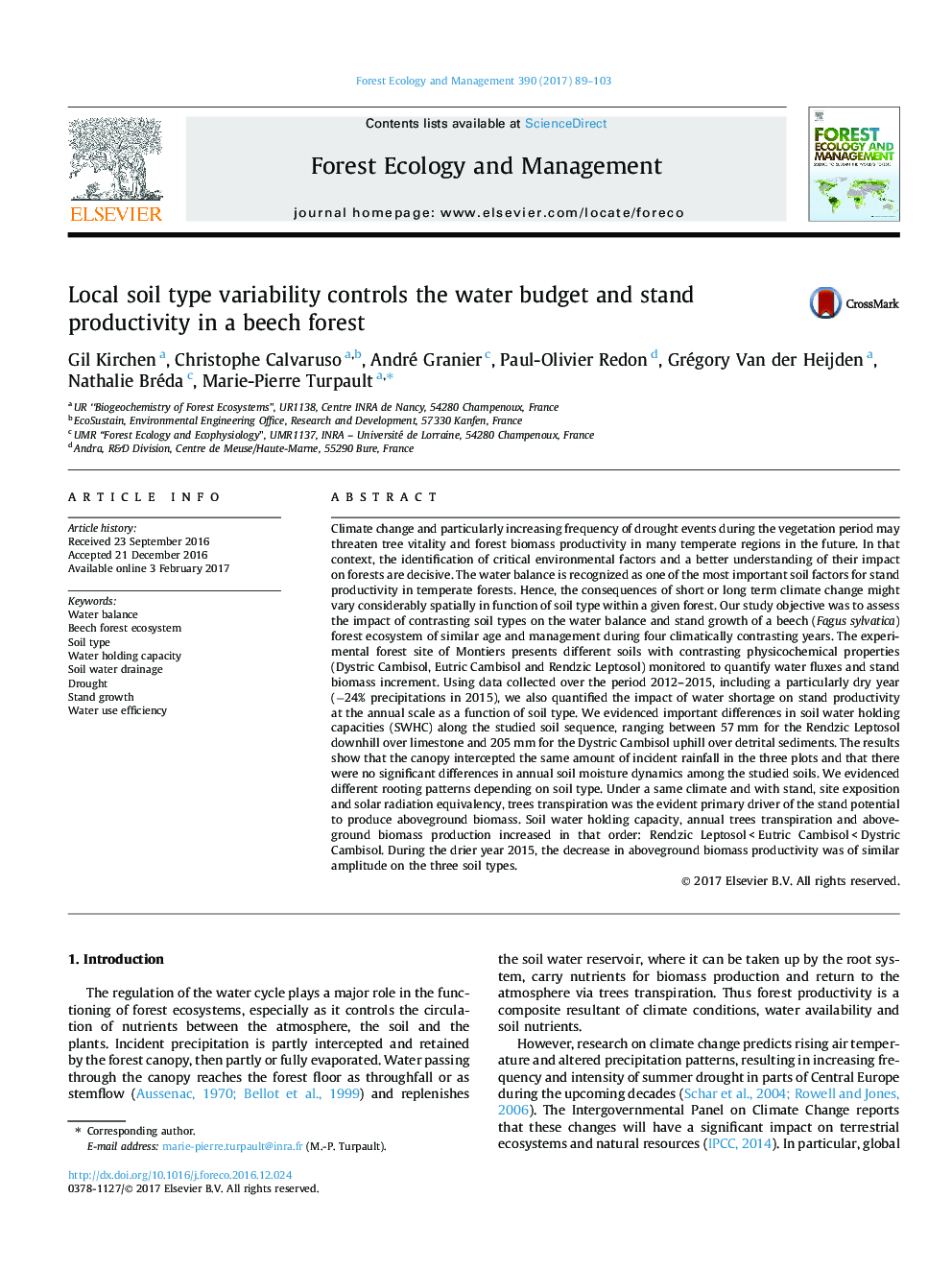| کد مقاله | کد نشریه | سال انتشار | مقاله انگلیسی | نسخه تمام متن |
|---|---|---|---|---|
| 6459512 | 1421368 | 2017 | 15 صفحه PDF | دانلود رایگان |
- The water balance is an important factor for stand productivity in forests.
- We assessed the impact of soil type on the water balance and beech growth.
- Deep loamy and shallow stony soils were compared.
- The water cycle is driven by the soil water holding capacity and root distribution.
- Trees transpiration was the primary driver of stand biomass production.
Climate change and particularly increasing frequency of drought events during the vegetation period may threaten tree vitality and forest biomass productivity in many temperate regions in the future. In that context, the identification of critical environmental factors and a better understanding of their impact on forests are decisive. The water balance is recognized as one of the most important soil factors for stand productivity in temperate forests. Hence, the consequences of short or long term climate change might vary considerably spatially in function of soil type within a given forest. Our study objective was to assess the impact of contrasting soil types on the water balance and stand growth of a beech (Fagus sylvatica) forest ecosystem of similar age and management during four climatically contrasting years. The experimental forest site of Montiers presents different soils with contrasting physicochemical properties (Dystric Cambisol, Eutric Cambisol and Rendzic Leptosol) monitored to quantify water fluxes and stand biomass increment. Using data collected over the period 2012-2015, including a particularly dry year (â24% precipitations in 2015), we also quantified the impact of water shortage on stand productivity at the annual scale as a function of soil type. We evidenced important differences in soil water holding capacities (SWHC) along the studied soil sequence, ranging between 57 mm for the Rendzic Leptosol downhill over limestone and 205 mm for the Dystric Cambisol uphill over detrital sediments. The results show that the canopy intercepted the same amount of incident rainfall in the three plots and that there were no significant differences in annual soil moisture dynamics among the studied soils. We evidenced different rooting patterns depending on soil type. Under a same climate and with stand, site exposition and solar radiation equivalency, trees transpiration was the evident primary driver of the stand potential to produce aboveground biomass. Soil water holding capacity, annual trees transpiration and aboveground biomass production increased in that order: Rendzic Leptosol < Eutric Cambisol < Dystric Cambisol. During the drier year 2015, the decrease in aboveground biomass productivity was of similar amplitude on the three soil types.
Journal: Forest Ecology and Management - Volume 390, 15 April 2017, Pages 89-103
